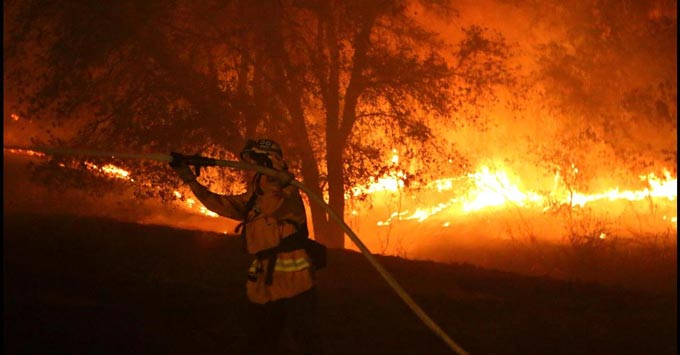
Mountain Fire
Credit: Ventura County Fire Department
November 8, 2024 - By Alison Hewitt - The wind-whipped Mountain fire in Southern California burned thousands of acres Wednesday, including a still-unknown number of homes in Ventura County.
It’s the disturbing but expected result of factors like climate change and dangerously dry Santa Ana winds, says UCLA climate scientist Alex Hall, director of UCLA’s Center for Climate Science:
- “The Mountain fire is another sobering reminder that when you combine our natural chaparral landscapes and strong Santa Ana winds with longer, hotter dry seasons, you have all the ingredients for these devastating events to increase in frequency, scale and speed.”
- “Unfortunately, it’s never a question of ‘if’ but rather ‘when’ and ‘how big’ when it comes to wildfires in Southern California. The impacts these fires have on people’s lives and livelihoods, as well as on our ecosystem, are truly devastating.”
- “Until now, much of the research around managing wildfire risk in California has focused on forested areas, but the Mountain fire once again drives home the urgent need for strategies tailored to the unique landscape, climate and communities of Southern California. We hope that our work can provide policymakers with the solutions-oriented research they need to make the best decisions to protect our communities and our environment in the face of a changing climate.”
Media are welcome to quote from Hall’s comments, or reach out to check availability for interviews. Hall is the faculty director of UCLA’s Sustainable LA Grand Challenge, which launched the Climate Wildfire Research Initiative in 2023. The CWRI’s recent workshops examined the future of vegetation and wildfire in Southern California and wildfire-related air quality and health impacts.
Air quality studies show the risks don’t stop at the fire line. UCLA research earlier this year found that wildfire smoke killed more than 50,000 Californians in just over a decade from 2008-2018.
For more on the Mountain fire, UCLA and UC ANR climate scientist Daniel Swain also shared comments in a live briefing on Wednesday, calling it a “suburban firestorm”:
- “There is what is considered to be an extremely critical fire risk period right now in Southern California due to widespread, very strong Santa Ana winds with low relative humidity – extremely low relative humidity – and very dry fuels. That's characteristic of an environment where fires can spread very quickly.”
- “This has been a highly destructive fire that is continuing to burn structures as it moves forward. Again, this is not necessarily even a heavily vegetated area in some cases, but this just became a suburban firestorm.”
- “This has unfortunately been a highly destructive fire; probably at least the second-most destructive fire of the season in California, if not the most destructive, depending on what the final toll is.”
Source: UCLA








